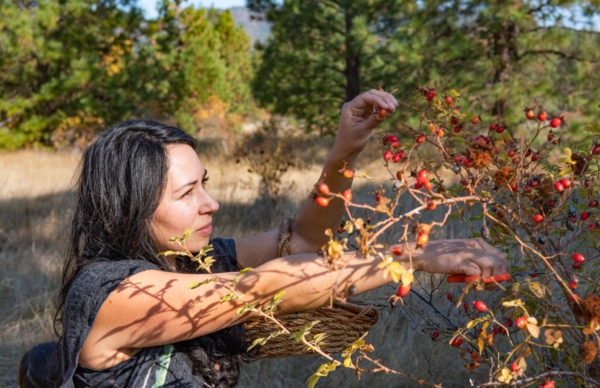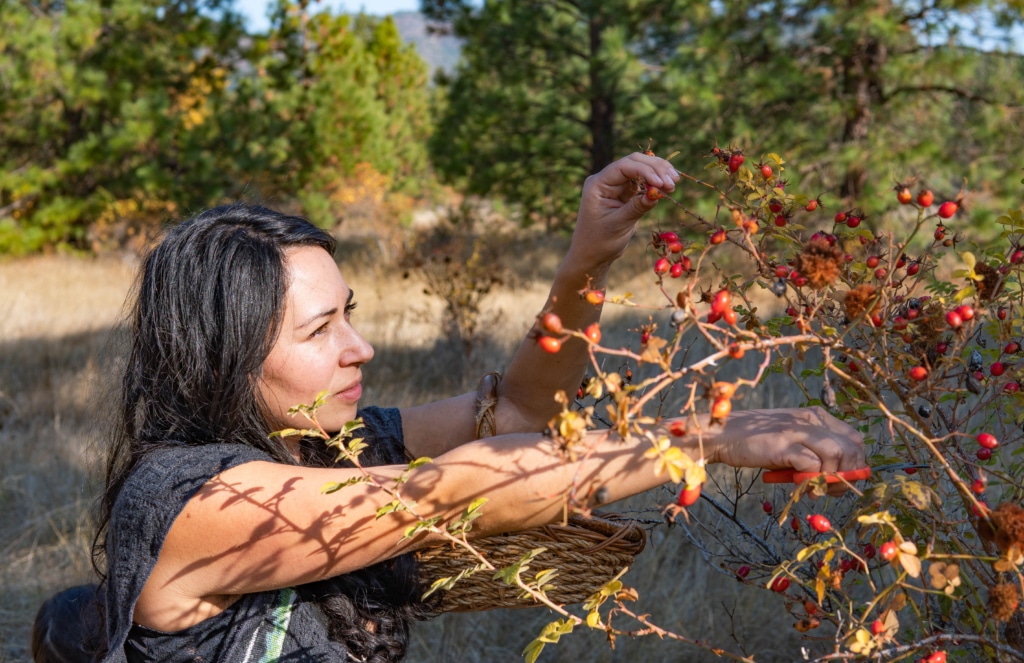
There’s a kind of botanical magic that only summer can bring – the scent of a sun-warmed Rose bush in full bloom, the crisp brightness of Lemon Balm brushing against your fingers, the way a stand of wild Mint seems to call you closer. This is the season when aromatic plants are bursting with scent and vitality, offering their peak potency for aromatic medicine-making, herbal crafting, and soulful connection.
Whether you’re creating a fresh Lavender cordial, sipping a solar-infused Mint tea, or gently harvesting Chamomile to dry for incense or oil infusions, summer invites you into a direct relationship with the living green world. Working with fresh plant material doesn’t just enhance the potency of your herbal creations; it deepens your connection with the plants themselves. You meet them alive, in their natural habitat, witnessing their full expression in the height of the season.
There’s medicine in this connection, too. Nature heals us. The simple act of stepping outside to harvest, feeling the sun on your skin, tree leaves rustling in the breeze, and moving gently with the rhythm of nature can lift your mood, calm your nervous system, and even boost your immunity. Deep within our bones lives the memory of gathering, of moving through the wild with reverence – smelling, listening, knowing. We are all descended from those who once lived by the rhythms of the land, and when we return to the practice of wild harvesting, we return to those ancestral roots.
This ancient practice of gathering plants from the wild for food, medicine, incense, or craft is called wild harvesting (aka wildcrafting). At its heart, it’s a practice of relationship and responsibility. Wild harvesting with integrity means honoring the plants, the ecosystem they belong to, and the generations to come. It’s about asking permission, both from the land and from the spirit of the plant, before taking. It’s about knowing what to harvest, how much, when, and from where.
In a time when many plant populations are threatened by over-harvesting and habitat loss, practicing ethical and sustainable wildcrafting is not just a personal value – it’s a vital act of ecological stewardship. When we harvest with care, we give thanks to the plants and the planet, ensuring that the gifts of these wild medicines remain available not just for ourselves, but for future generations, pollinators, animals, and the Earth herself. In this article, we’ll explore essential tips for ethical and sustainable wild harvesting, from safety precautions and proper techniques to a few considerations that might surprise you. Let’s dig in!
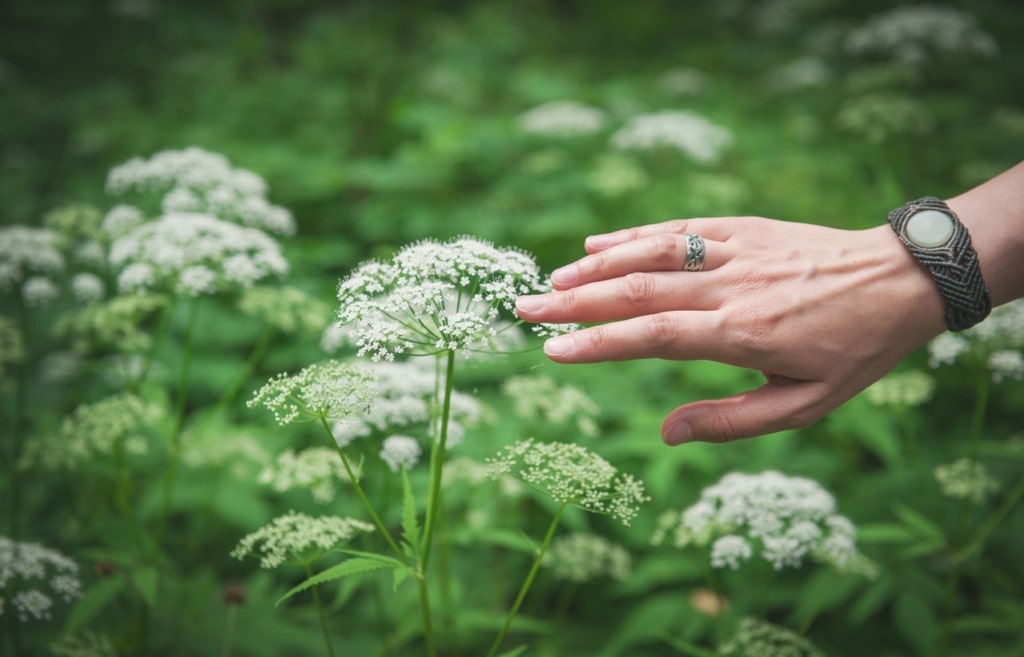
Be careful: Angelica (pictured above) looks very similar to Poison Hemlock!
Wild Harvesting Safety
When it comes to wild harvesting, the golden rule is simple: safety first. Safe, respectful wild harvesting starts with knowledge and proper plant identification. And the more you learn, the more meaningful and magical your time in the wild becomes. Many edible or medicinal herbs have toxic lookalikes, some of which can be deadly. A classic example is the Carrot family (Apiaceae/Umbelliferae), where beneficial plants like Wild Carrot or Angelica can easily be mistaken for Poison Hemlock or Water Hemlock – both of which are highly toxic, even deadly. This is why proper identification is so important.
But beyond personal safety, misidentifying plants can cause unnecessary harm to the environment. Harvesting something before you know what it is (and then later realizing it’s inedible, toxic, or endangered) means you’ve removed a plant from its ecosystem without purpose, interrupting nature’s delicate balance. If you’re ever unsure, take a photo and come back later once you’ve had time to do your research and feel confident in your identification. Harvesting should always be intentional, respectful, and informed.
Remember, learning to identify wild plants takes time – it’s a lifelong practice, and doesn’t happen overnight. Building confidence in plant identification means meeting plants in the field and studying them through trusted sources. It’s a relationship that deepens over seasons, not days. (Even after over a decade of being an herbalist, I’m still learning new things about plants!)
Here are a few ways to begin your plant identification journey:
Unlock Your Free Issue Of...
🌿 The Aromatic Medicine Garden Membership 🌿
Are you ready for a deeper, holistic dive into the world of aromatic plants? See what our membership is all about with your free sneak peek issue, including an hour-long plant talk and a 21-page plant profile pdf full of recipes and insights.

Sustainable Wild Harvesting Practices
Sustainable wildcrafting means harvesting in a way that nourishes the ecosystem rather than depleting it. Sustainable practices ensure that both the plants and their surrounding habitats can continue to thrive, not just this season, but for generations to come. Here are some key guidelines to follow:
The “One in Ten” Rule
One protocol that many herbalists and foragers embrace in sustainable wild harvesting is the “One in Ten” rule: for every ten plants you find, harvest only one (and only if the patch is healthy, abundant, and robust). This practice helps ensure that the plant population remains strong and continues to reproduce. If there are fewer than ten plants, it’s best to observe, study, and move on. Remember, the goal isn’t to take as much as possible – it’s to take only what you need while ensuring the plants you love are still here next year. And make sure you only harvest what you have time to process!
Use the Right Tools and Methods
The tools you use and how you use them can make all the difference in whether your harvest supports or stresses the plant. Always harvest with intention. Don’t rip or tear. Move slowly, mindfully, and avoid trampling the surrounding growth. And when in doubt – leave it be. For aerial parts and woody stems, use sharp scissors or pruning shears to make clean, precise cuts to help reduce trauma and prevent disease.
Whenever possible, use harvesting techniques that benefit the plant’s growth. For shrubby species, cut just above a healthy leaf node that faces outward from the center of the plant. This encourages a bushier, fuller growth pattern and can result in more vibrant, resilient plants over time [1]. Make your cut at a 45-degree angle, about ¼ inch above the node. For plants with opposite leaves, a clean, straight-across cut is often better. These small details, like angle, placement, and distance, can help prevent unnecessary stress, infection, or pest invasion [1].
When harvesting roots, reach for a hori-hori knife or a small trowel. Dig gently and precisely, taking care not to disturb nearby roots, plants, or soil structure more than necessary. Refill your digging spot and leave the earth as undisturbed as possible. For tree resins, use a spoon or dull knife to carefully scrape resin from hardened flows on the bark. Never cut into the tree. Instead, look for resin that has dripped naturally or that has formed away from old wounds. Think of fresh resin as the tree’s bandage – removing it from a fresh wound is like pulling off its band-aid, leaving the tree vulnerable to infection and further injury. (To learn more, read The Benefits of Pine Resin & How to Harvest It.)
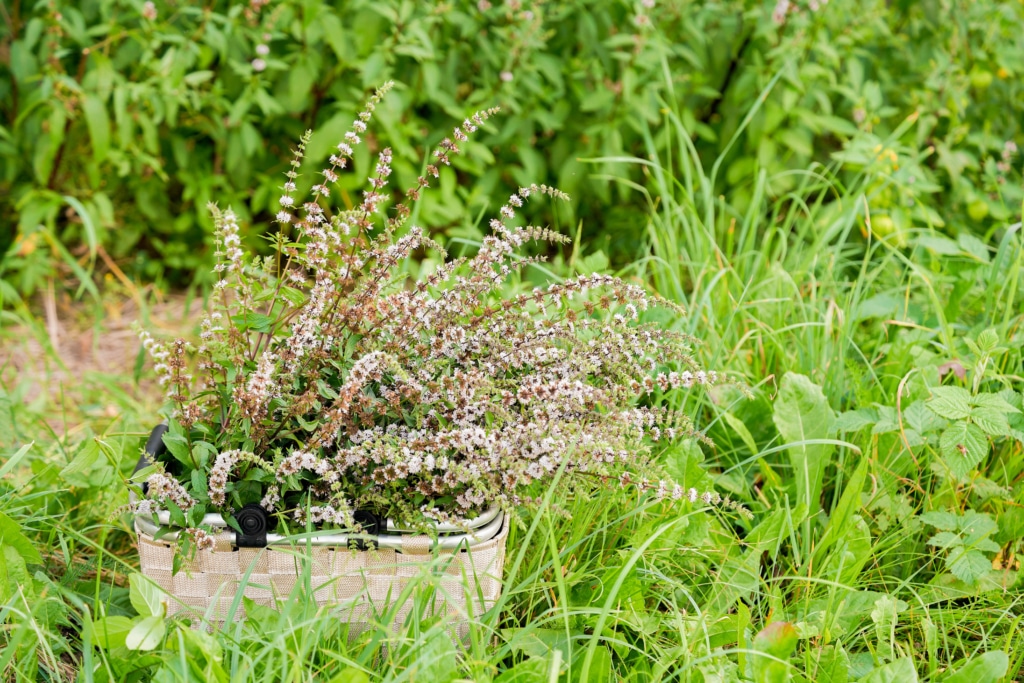
Harvest with the Seasons
Nature moves in rhythms. Tuning in to the seasons not only honors the cycles of life; it enhances the vitality and potency of your plant-based creations. As a general guide, roots are typically dug in the fall when the plant’s energy has returned underground. Leaves and aerial parts are best gathered in late spring or early summer before flowering, and flowers are usually harvested at full bloom when their fragrance and constituents peak. Seeds and fruits come last, often in late summer or fall. Resins can be harvested year-round.
Harvesting too soon or too late can interfere with the plant’s ability to regenerate. By observing life cycles and local seasonal cues, you can build a deeper, more respectful relationship with the living world around you. This attunement is where true wild harvesting with integrity begins.
Endangered and At-Risk Plant Species
Avoid harvesting endangered and at-risk plants. Overharvesting, habitat destruction, and climate change have pushed many beloved botanicals toward threatened status. Before venturing out to wild harvest, consult resources like the United Plant Savers' At-Risk List or your local conservation databases. Here are some common endangered or at-risk aromatic plants to approach with extra caution (or avoid harvesting altogether unless you're tending them in your own garden):
- Sandalwood (Santalum spp.) – in Hawaii only
- White Sage (Salvia apiana) – especially important due to cultural and ecological impact
- Osha (Ligusticum porteri)
- Echinacea spp.
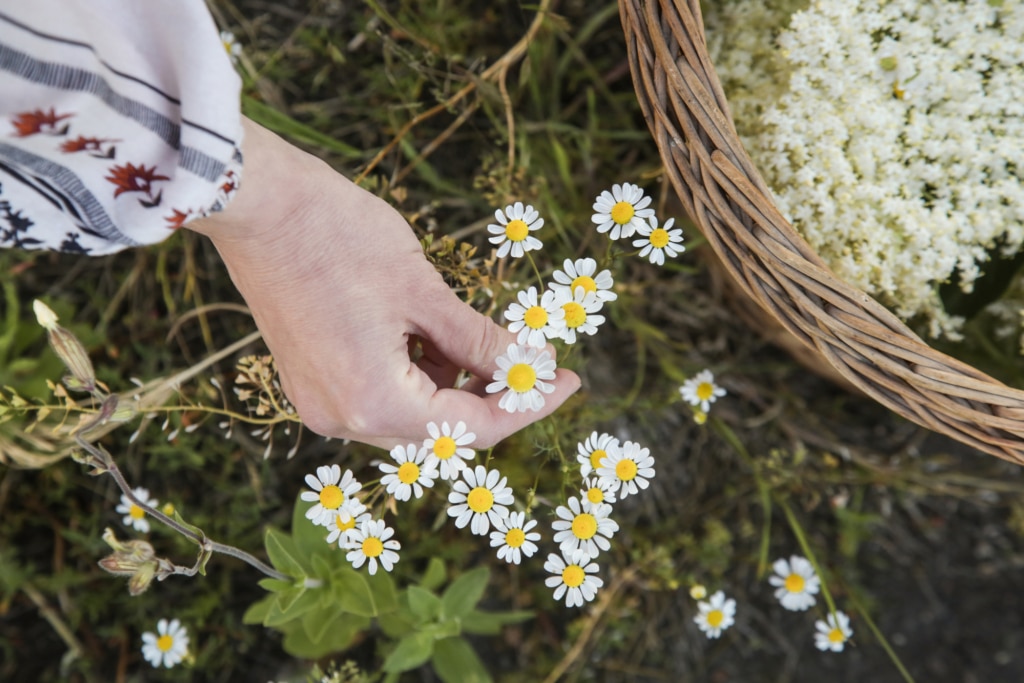
The Principles of Ethical Wild Harvesting
Wild harvesting is more than just simply gathering plants; it’s about relationship, reciprocity, and responsibility. These guiding principles help ensure that your practice is respectful, intentional, and rooted in care:
Harvest with the Land in Mind
Before you ever pick a flower or snip a stem, pause and observe. Is the ecosystem healthy and thriving? Can it withstand a harvest? Are you on private or public land, and do you have permission to be there? Is the area clean and free of contamination? Roadsides, clear-cuts, city parks, and agricultural zones are often sprayed with pesticides, herbicides, or other chemicals that plants can absorb. When in doubt, do a bit of research or choose another spot.
Ethical wildcrafting starts with a deep respect for the environment, which includes understanding both the visible and invisible influences on the land. Whenever possible, listen to the ancestral and Indigenous knowledge of the region. Learn from those who have tended these relationships for generations, and give thanks where it’s due.
Harvest with Purpose
Take only what you truly need. Overharvesting often stems from disconnection – gathering “just in case” or taking more than necessary (which can happen easily when you’re excited about a harvest!). When you wild harvest with intention, you honor the plant’s life and the ecosystem it belongs to.
Harvest with Respect
Approach each harvest as a sacred exchange. Offer gratitude for the plant, for the land, for the life given. Move slowly and gently, with reverence. Avoid damaging surrounding plants or habitat, and take care not to disturb pollinators or wildlife.
Support Regeneration & Give Back
Sustainable and ethical harvesting involves giving back to the land. Simple practices like scattering seeds, replanting root crowns, or leaving portions of rhizomes intact can go a long way toward regeneration. Even small actions, like covering a freshly dug root hole with soil and leaf litter, help protect the earth and reduce erosion. Some wildcrafters offer a moment of gratitude or a symbolic offering (like water or a pinch of seaweed for nutrients) as a way to honor the exchange.
Harvest with Knowledge
Connect with the plants deeply. Know their Latin names, life cycles, habitats, and roles in the ecosystem. Understand which species are at-risk, which are invasive, and which are thriving. Proper identification and ecological understanding are essential to any ethical wildcrafter.
Harvest with Humility
Above all, remember: you are part of a larger web. Wildcrafting isn’t about control or ownership; it’s about listening, learning, and living in harmony with the land. Let humility guide your hand and gratitude guide your heart.
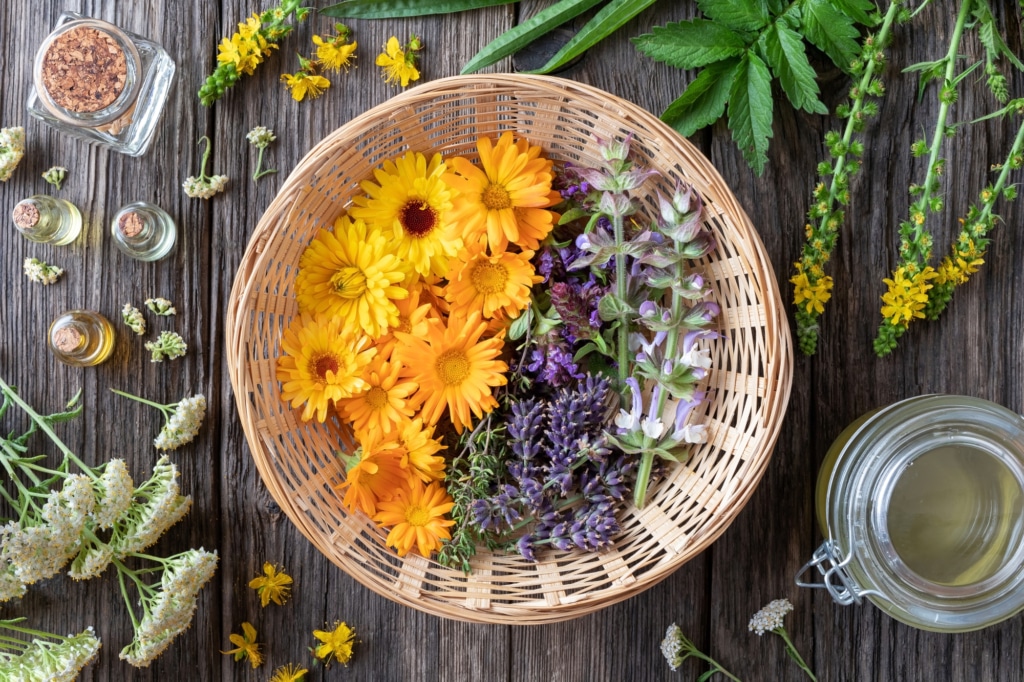
Alternatives to Wild Harvesting
While wildcrafting can be a deeply meaningful way to connect with the botanical kingdom and the land, it’s not always the most sustainable or accessible option. Thankfully, there are beautiful alternatives that still allow you to connect with and work with potent, ethically sourced plants, without impacting wild populations.
One of the most empowering ways to steward aromatic plant medicine is to grow it yourself. Whether you have a garden, a few containers on a balcony, or a windowsill with good light, growing your own herbs invites you to develop an intimate relationship with the plants while reducing pressure on wild ecosystems. Many beloved aromatic plants, like Peppermint, Lemon Balm, Tulsi, Chamomile, and Rosemary, are easy to grow at home and will thrive with just a little care. When you tend the plant from seed to harvest, your botanical creations become more personal, potent, and connected. (For inspiration, check out our article: 13 Aromatic Plants You Can Easily Grow at Home.)
If growing your own plants isn’t feasible, seek out small-scale organic herb farms, co-ops, or local wildcrafters who prioritize sustainability, transparency, and regenerative practices. Look for those who clearly share how and where their plants are grown or gathered, and who actively support soil health, biodiversity, and ethical labor practices. When you buy from responsible growers, you’re helping create a viable alternative to mass-market herb suppliers while supporting people who are dedicated to honoring the earth.
Indigenous communities have stewarded plant relationships for generations, often with a depth of knowledge and respect unmatched by modern foraging trends. Whenever possible, support Indigenous herbalists, makers, and harvesters whose practices are rooted in cultural tradition and ecological care. Likewise, buying from local wildcrafters who harvest responsibly in your bioregion helps support sustainable economies and reduces the environmental footprint of plant sourcing.
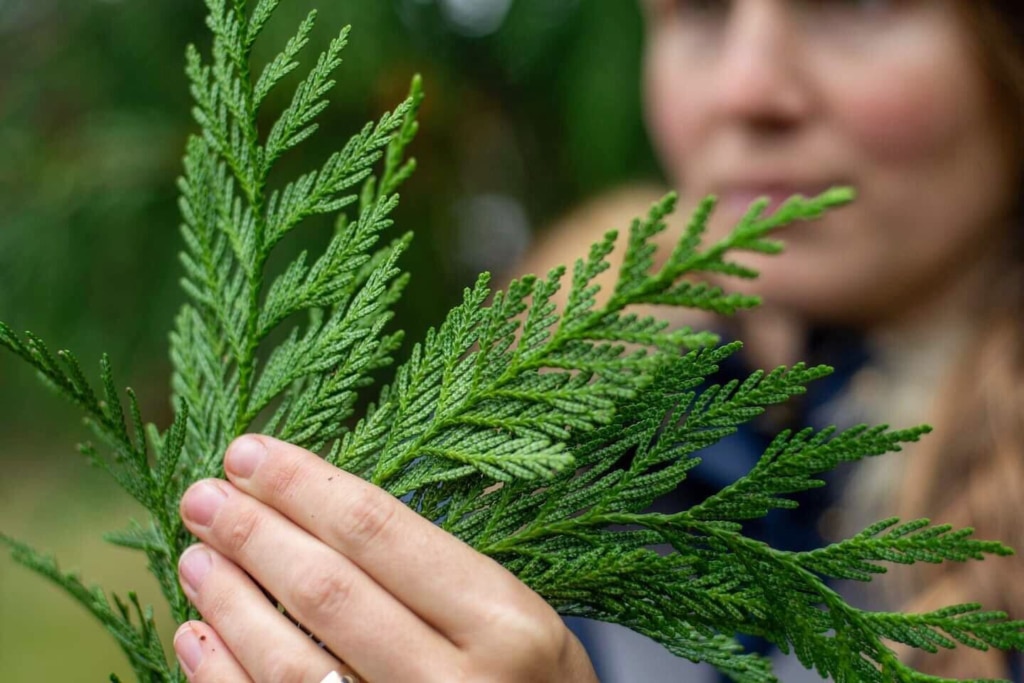
Wild Harvesting as an Act of Reciprocity
Wildcrafting is about reconnecting. It’s a return to our roots, both ancestral and ecological, and a way to build meaningful relationships with the plants and natural world. When you’re out in nature, surrounded by the scent of aromatic herbs and working with the plants directly, something shifts. It deepens your understanding and strengthens your connection with nature in a way that no book or classroom ever could. That experience alone is a kind of medicine.
Ethical harvesting is an act of reciprocity. It’s not just about taking, it's about tending. When we give back, when we harvest with integrity, we help ensure that these gifts of the Earth continue to flourish for ourselves, for future generations, and for all the beings who depend on them.
As Robin Wall Kimmerer so beautifully writes in Braiding Sweetgrass: “The Honorable Harvest, a practice both ancient and urgent, applies to every exchange between people and the Earth. Its protocol is not written down, but if it were, it would look something like this: Ask permission of the ones whose lives you seek. Abide by the answer. Never take the first. Never take the last. Harvest in a way that minimizes harm. Take only what you need and leave some for others. Use everything that you take. Take only that which is given to you. Share it, as the Earth has shared with you. Be grateful. Reciprocate the gift. Sustain the ones who sustain you, and the Earth will last forever.”
Let this be the spirit that guides your wild harvesting journey, not just as a forager, but as a caretaker of the wild.
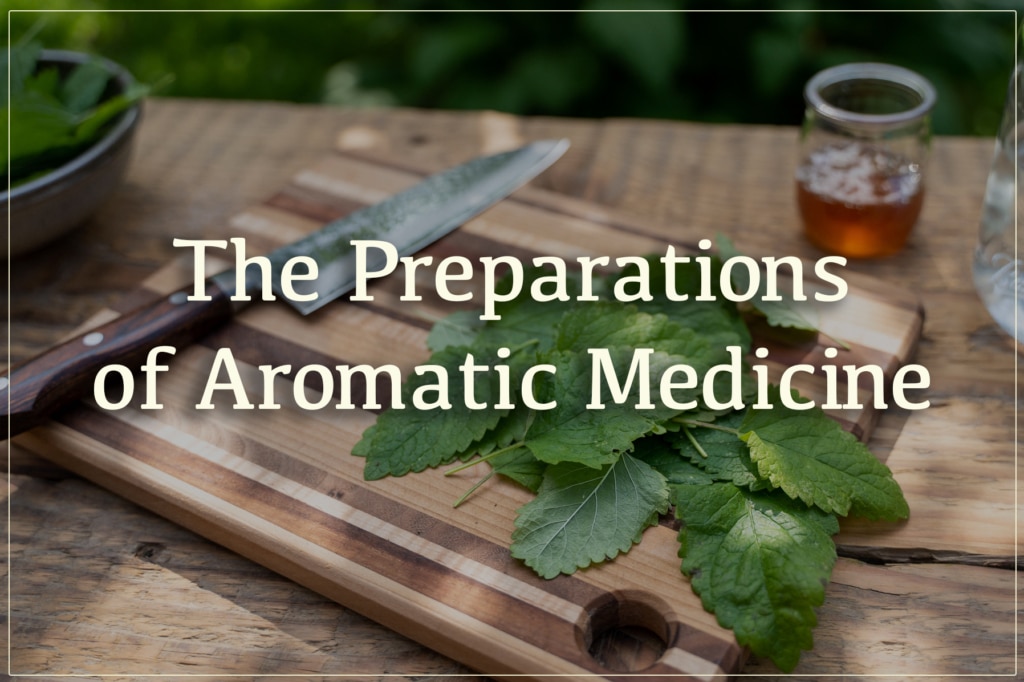
Are you ready to make your own herbal creations from freshly harvested herbs?
Our Art of Aromatic Preparations Mini-Course is open now! This hands-on mini-course features 6 in-depth video tutorials on foundational aromatic medicine preparations like tinctures, salves, hydrosols, oil infusions, and more. Led by our beloved instructor Erika Galentin, clinical herbalist and aromatherapist, you'll be guided step-by-step through each preparation, with expert insights, tips, and techniques woven throughout.
Article Written By Melissa Szaro

References
1. Kloos, Scott. (2017). Pacific Northwest Medicinal Plants: Identify, Harvest, and Use 120 Wild Herbs for Health and Wellness. Portland, OR: Timber Press.
© 2025 The Northwest School of Aromatic Medicine. All rights reserved.
*The statements above have not been evaluated by the FDA, and are for educational purposes only. This article is not intended to diagnose, treat, cure, or prevent any disease. This article should not be taken as medical advice. Please consult your physician before you use this information for health purposes.
